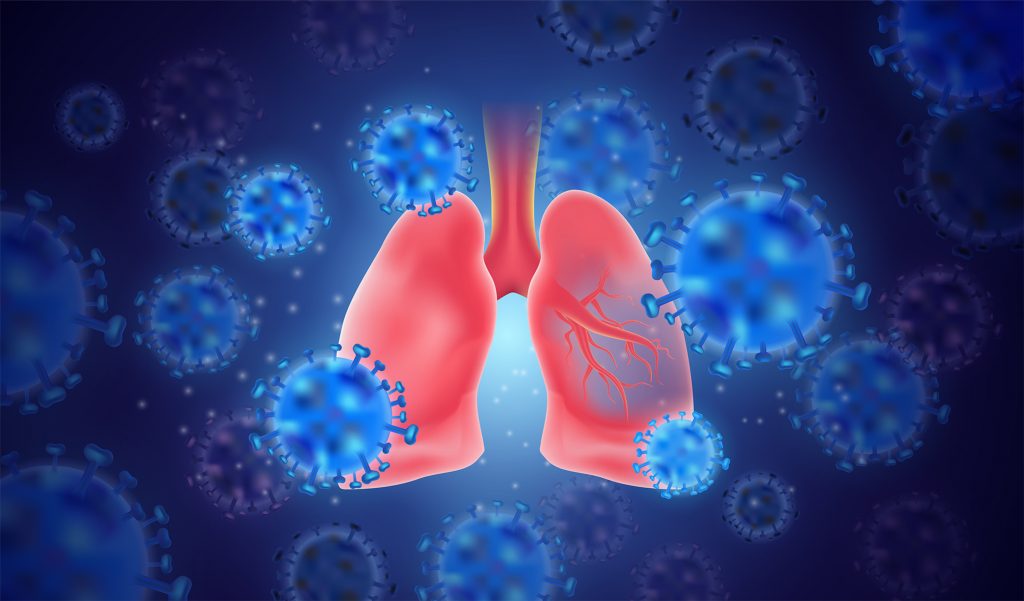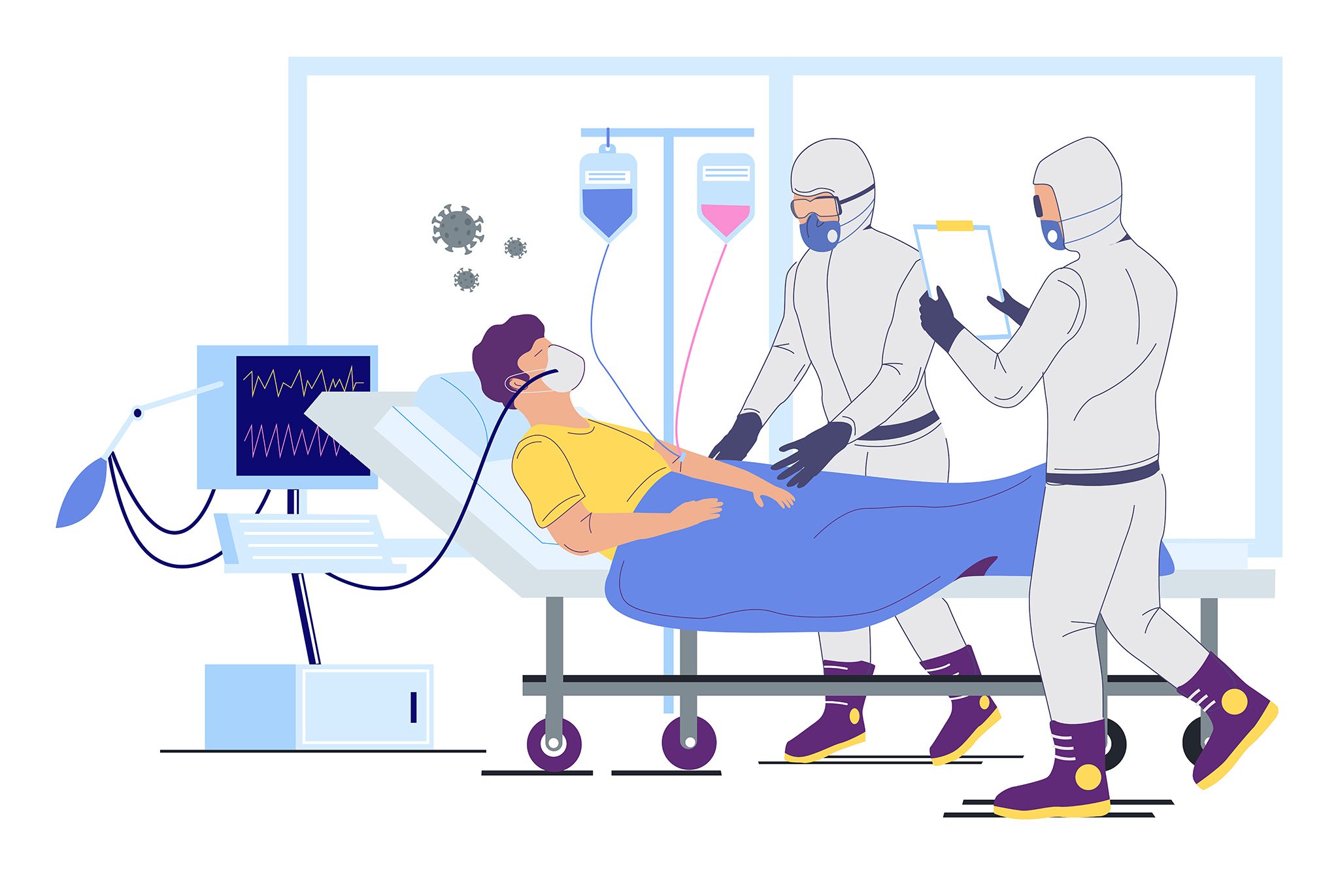Can long-term hospitalisation and antibiotic use for severe COVID-19 pneumonia increase the risk of antimicrobial resistance?

COVID-19 infection is known to be associated with a wide range of clinical manifestations, including severe pneumonia. Those affected may exhibit symptoms such as fever, cough, fatigue, and difficulty in breathing. In severe cases, pulmonary symptoms may resemble sepsis and septic shock, caused by both direct viral invasion and an immune-mediated response known as a ‘cytokine storm’.1,2 The associated lung pathology may be reflective of viral-induced injury, bacterial superinfection (secondary bacterial infection in SARS-CoV-2-infected patients), or immune-mediated endotheliitis and microthrombosis.3,4
During outbreaks of ‘severe acute respiratory syndrome’ (SARS) and ‘Middle Eastern respiratory syndrome’ (MERS), researchers demonstrated a correlation between respiratory viral infections and bacterial and fungal superinfection.5 However, data are limited on the prevalence and severity of bacterial and fungal superinfections in relation to COVID-19 infection. Currently, empiric antibacterial therapy is commonly administered to patients with severe COVID-19 in an effort to prevent or treat bacterial coinfection or superinfection. However, the true frequency of bacterial coinfection has been subject to debate, particularly in the context of its implications for antimicrobial resistance development.
In a recent retrospective analysis, Liu and colleagues studied patients with COVID-19 pneumonia requiring intubation (n=165), who were admitted to a community hospital system in the United States between March 1 and May 1, 2020.5 At intubation, 87.3% (n=144) of the patients were initiated with empiric antimicrobials directed at potential bacterial coinfection. The medical records of the recruited patients were reviewed, and sputum samples were evaluated for bacterial and fungal growth.5 The primary objectives of the study were to determine the frequency of culture positivity and to identify risk factors and outcomes associated with positive cultures. In addition, the timing of antimicrobial resistance development was also evaluated.5
Key findings of the study include5:
- Upon admission, all 165 critically ill COVID-19 patients had or were developing severe pneumonia within 24 hours of intubation.
- Among the study population, 50.3% of patients were previously residing at home, 6.1% were at group homes, and 43.6% were at nursing facilities.
- The average age of the patients was 68.7 years, and the average length of hospitalisation was 19.9 days.
- The overall mortality rate was 62.4%, with the highest rate observed among nursing home residents (80.6%).
- Analysis of the sputum cultures showed that within 24 hours of intubation, 45% of samples (73 of 165) did not indicate acute bacterial or fungal infection.
- Conversely, cultures obtained 1 week or more following intubation showed pathogenic growth in 64.9% of cases (72 of 111), with 70.8% of samples consistent with late pneumonia and 29.2% suggesting colonisation.
- Extended hospitalisations and intubation led to a considerable number of new infection episodes. Late pneumonia after intubation showed a variety of culture results, with Staphylococcus aureus and Pseudomonas aeruginosa being the most frequently isolated potential pathogens.
- Additionally, sputum colonisers were found in 31 instances, with Pseudomonas being the most frequently recovered pathogen.
- Approximately 10.8% of the late post-intubation cultures revealed increasing antimicrobial resistance, primarily involving Pseudomonas, Enterobacter, or Staphylococcus aureus.
- The Pseudomonas and Enterobacter species acquired new resistance to antibiotics such as 3rd generation cephalosporins, broad-spectrum beta-lactam/beta-lactamase inhibitors, and occasionally carbapenems.
- In response to susceptibility data, appropriate adjustments were made to antibiotic treatments to address the emerging resistance patterns.
- Intriguingly, patients with the most severe cases of COVID-19 pneumonia demonstrated symptoms suggestive of a viral aetiology.
- A chest X-ray and/or chest CT scan revealed radiographic ground glass interstitial pattern.
- The absence of purulent sputum prior to or around the time of intubation was indicative of either no culture growth or recovery of normal oral flora ± yeast.
Based on their findings, Liu and colleagues5 recommended the following approaches when managing patients with severe COVID-19 pneumonia: (1) empiric use of antibacterial agents in cases indicative of a viral aetiology; (2) discontinuation of empiric antibiotics after 48 hours in the absence of sputum or bacterial growth upon sampling; (3) use of the length of hospital stay and patient’s clinical trajectory as critical factors when determining the need for antibiotic therapy and choice of appropriate agents (extended duration of hospitalisation may predispose patients to nosocomial pathogens); and (4) periodic review of culture tests, antibiotic use and clinical outcomes among hospitalised COVID-19 patients.5
Overall, the study emphasised the significance of understanding the associated risk factors and timing of antimicrobial resistance development to optimise antibiotic usage with the aim to prevent antimicrobial resistance development and to improve patient outcomes in the management of severe COVID-19 pneumonia.5
References
- Zhou F, et al. Lancet 2020;395:1054-62.
- Hu B, Huang S, Yin L. J Med Virol 2021;93:250-6.
- Varga Z, et al. Lancet 2020;395:1417-8.
- Bradley BT, et al. Lancet 2020;396(10247):320.
- Liu H, et al. Ann Clin Microbiol Antimicrob 2021;20(1):69.










